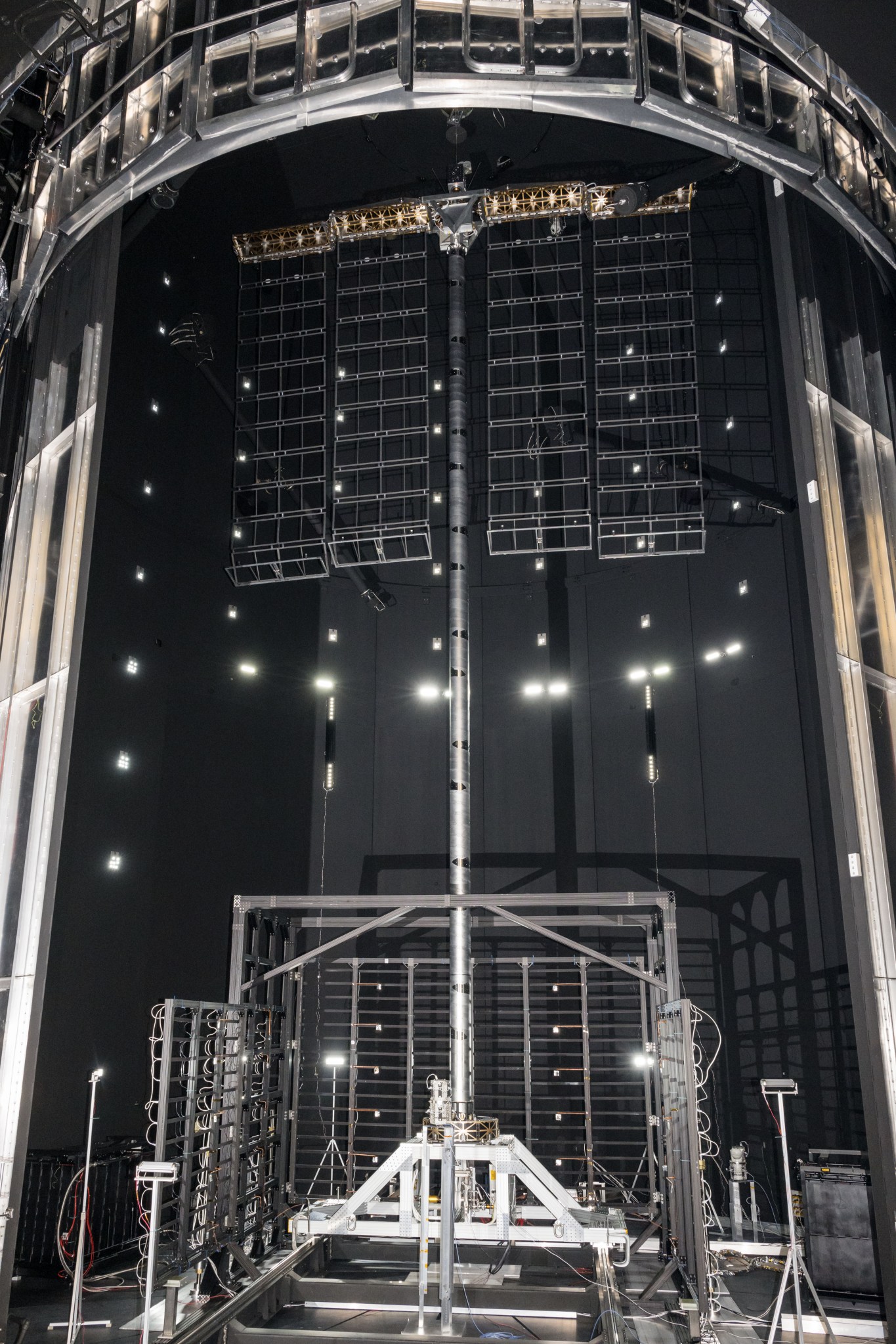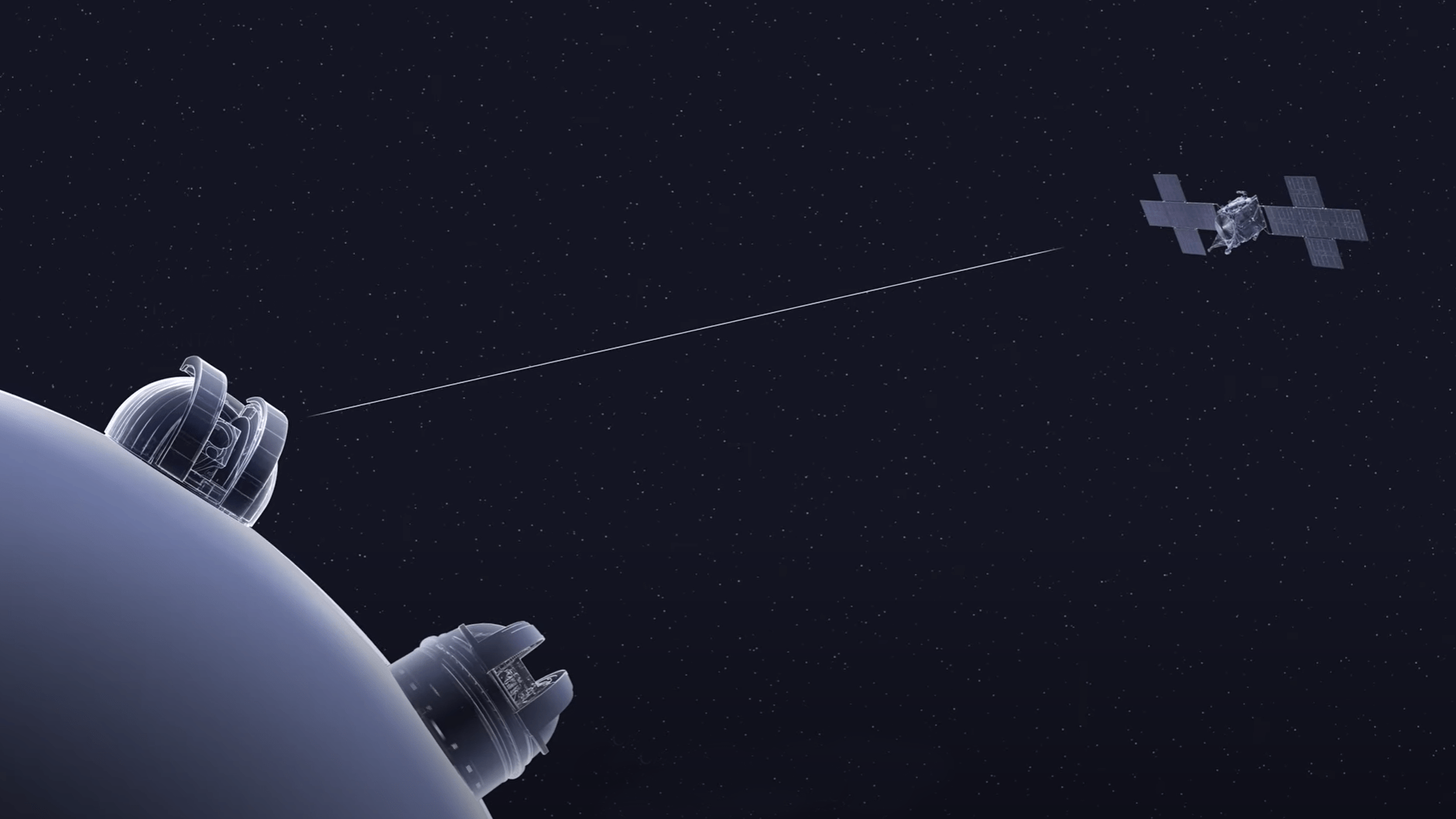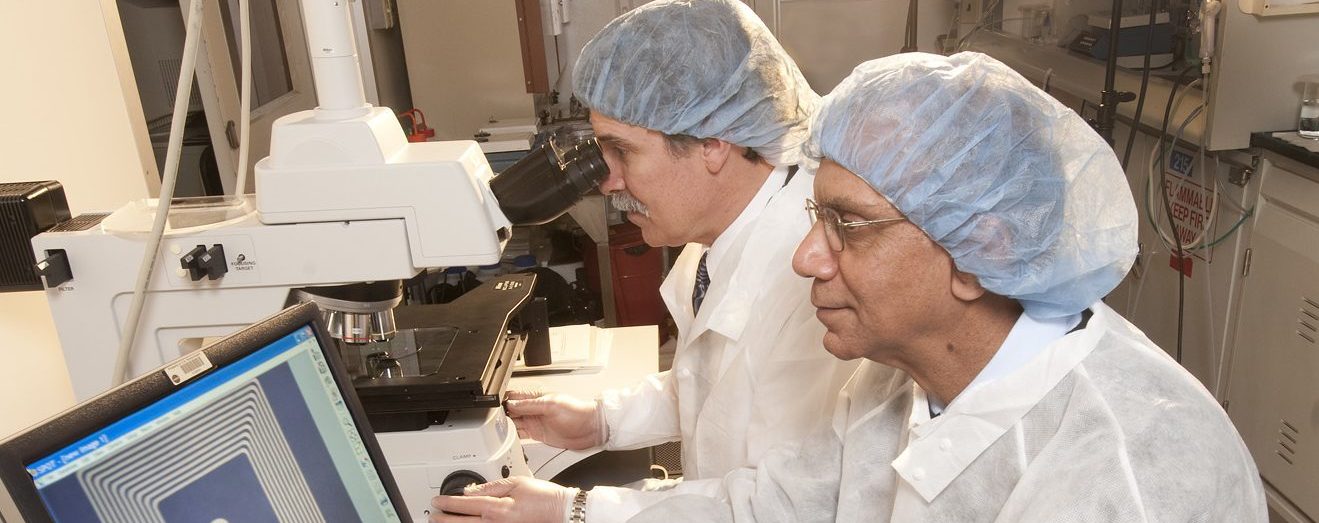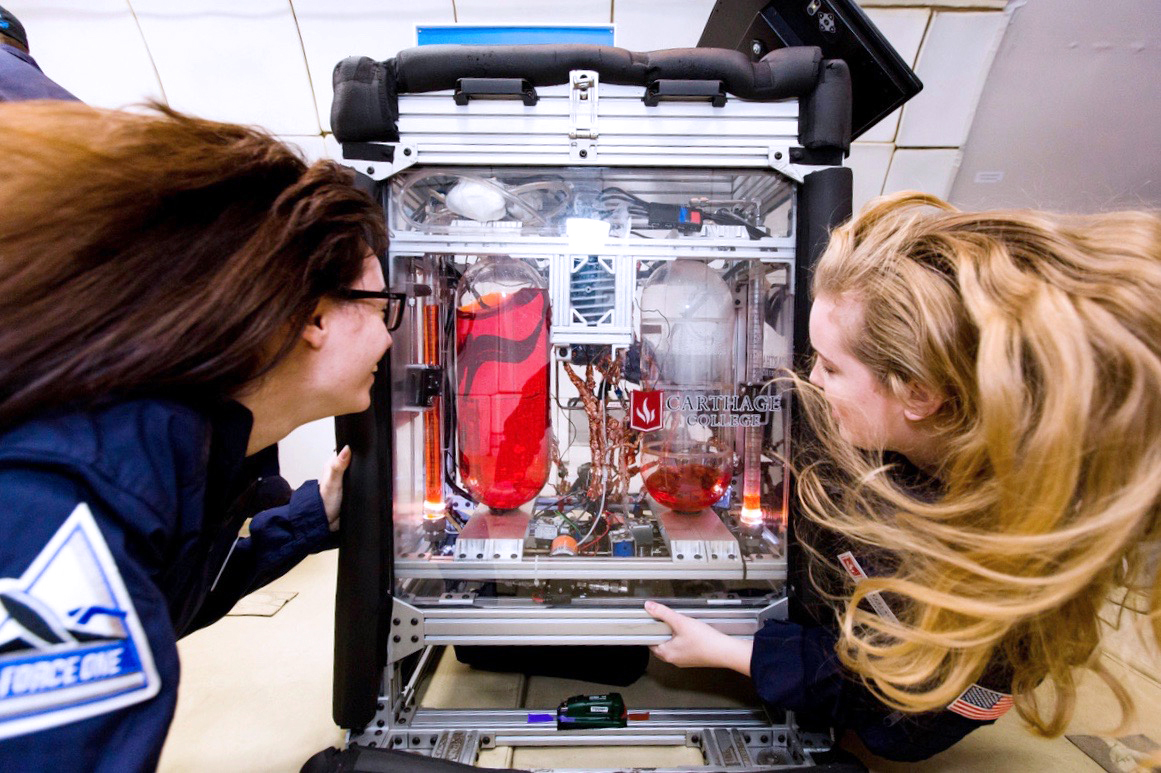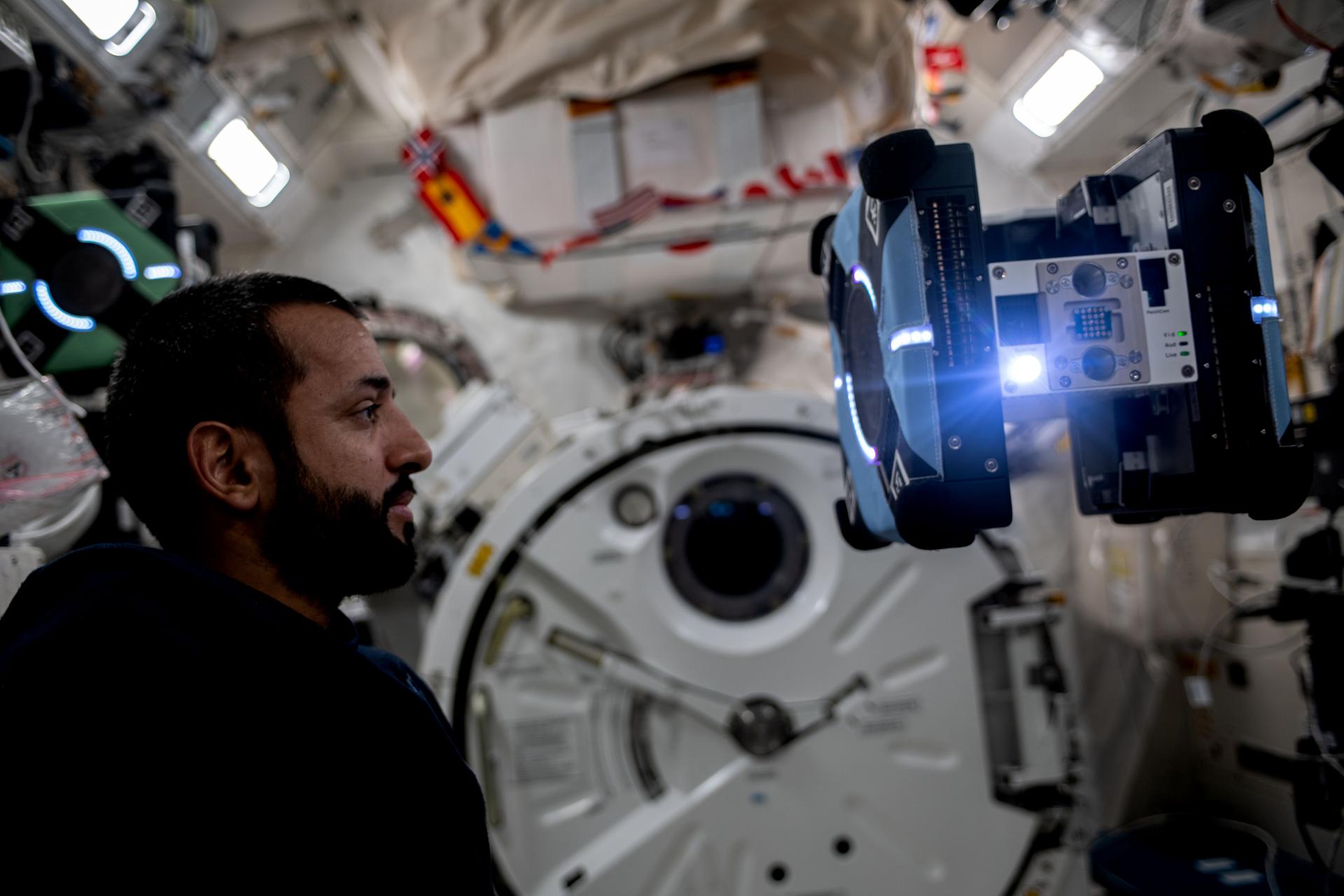Congratulations to the selected teams and their schools who will participate in the Lunar Autonomy Challenge! 31 teams were selected for the qualifying round, engaging 229 students from colleges and universities in 15 states. Teams will now move on to a Qualifying Round where they will virtually explore and map the lunar surface using a digital twin of NASA’s lunar mobility robot, the ISRU Pilot Excavator (IPEx). Teams will develop software that can perform set actions without human intervention, navigating the digital IPEx in the harsh, low-light conditions of the Moon. The Qualifying Round will extend to February 28, when…
Read MoreTag: Space Technology Mission Directorate
From Houston to the Moon: Johnson’s Thermal Vacuum Chamber Tests Lunar Solar Technology
Imagine designing technology that can survive on the Moon for up to a decade, providing a continuous energy supply. NASA selected three companies to develop such systems, aimed at providing a power source at the Moon’s South Pole for Artemis missions. Three companies were awarded contracts in 2022 with plans to test their self-sustaining solar arrays at the Johnson Space Center’s Space Environment Simulation Laboratory (SESL) in Houston, specifically in Chamber A in building 32. The prototypes tested to date have undergone rigorous evaluations to ensure the technology can withstand…
Read MoreNorthwestern University Takes Top Honors in BIG Idea Lunar Inflatables Challenge
Following eight months of intense research, design, and prototyping, six university teams presented their “Inflatable Systems for Lunar Operations” concepts to a panel of judges at NASA’s 2024 Breakthrough, Innovative and Game-Changing (BIG) Idea Challenge forum. The challenge, funded by NASA’s Space Technology Mission Directorate and Office of STEM Engagement, seeks novel ideas from higher education on a new topic each year and supports the agency’s Lunar Surface Innovation Initiative in developing new approaches and innovative technologies to pave the way for successful exploration on the surface of the Moon.…
Read MorePrecision Pointing Goes the Distance on NASA Experiment
4 min read Preparations for Next Moonwalk Simulations Underway (and Underwater) The laser that transmits between NASA’s Psyche spacecraft and Earth-based observatories for the Deep Space Optical Communications experiment successfully reaches its target thanks, in part, to a vibration isolation platform developed by Controlled Dynamics Inc., and supported by several Space Technology Mission Directorate programs. NASA/JPL-Caltech One year ago today, the future of space communications arrived at Earth as a beam of light from a NASA spacecraft nearly 10 million miles away. That’s 40 times farther than our Moon. That’s…
Read MorePioneering NASA Astronaut Health Tech Thwarts Heart Failure
3 min read Preparations for Next Moonwalk Simulations Underway (and Underwater) Dr. Rainee Simons (right) and Dr. Félix Miranda work together to create technology supporting heart health at NASA’s Glenn Research Center in Cleveland. Credit: NASA Prioritizing health is important on Earth, and it’s even more important in space. Exploring beyond the Earth’s surface exposes humans to conditions that can impact blood pressure, bone density, immune health, and much more. With this in mind, two NASA inventors joined forces 20 years ago to create a way to someday monitor astronaut…
Read MoreSail Along with NASA’s Solar Sail Tech Demo in Real-Time Simulation
Unable to render the provided source NASA invites the public to virtually sail along with the Advanced Composite Solar Sail System‘s space journey using NASA’s “Eyes on the Solar System” visualization tool, a digital model of the solar system. This simulation shows the real-time positions of the planets, moons, and spacecraft – including NASA’s Advanced Composite Solar Sail System. Solar sails use the pressure of sunlight for propulsion, angling toward or away from the Sun so that photons bounce off the reflective sail to push a spacecraft. This eliminates the need for heavy…
Read MoreNASA, Collaborators Announce a New Student Lunar Autonomy Challenge!
3 min read Preparations for Next Moonwalk Simulations Underway (and Underwater) This video shows NASA’s IPEx Excavator in a digital simulation environment. Credit: Johns Hopkins Applied Physics Laboratory (APL) Space is hard, but it’s not all hardware. The new Lunar Autonomy Challenge invites teams of students from U.S. colleges and universities to test their software development skills. Working entirely in virtual simulations of the Moon’s surface, teams will develop an autonomous agent using software that can accomplish pre-defined tasks without help from humans. These agents will be used to navigate…
Read MoreNASA’s Lunar Challenge Participants to Showcase Innovations During Awards
The Sun rises above the Flight Research Building at NASA’s Glenn Research Center in Cleveland. Credit: NASA Editor’s note: This media advisory was updated Friday, Sept. 13, 2024, with a correct phone number for the media contact at NASA’s Glenn Research Center. NASA‘s Watts on the Moon Challenge, designed to advance the nation’s lunar exploration goals under the Artemis campaign by challenging United States innovators to develop breakthrough power transmission and energy storage technologies that could enable long-duration Moon missions, concludes on Friday, Sept. 20, at the Great Lakes Science…
Read MoreOSAM-1 Partnership Opportunity: Request for Information
1 min read Preparations for Next Moonwalk Simulations Underway (and Underwater) NASA is exploring potential partnerships for alternate use cases for the On-orbit Servicing, Assembly, and Manufacturing 1 (OSAM-1) flight hardware, test facilities, and experienced personnel. Through a Request for Information for OSAM-1 Partnerships released Sept. 5, 2024, NASA seeks interest from U.S. organizations that will benefit commercial, civil, and national objectives, thereby advancing domestic leadership in In-space Servicing, Assembly, and Manufacturing (ISAM) capabilities. A comprehensive list of OSAM-1 resources and technologies organizations can consider using are outlined in the…
Read MoreNASA Seeks Input for Astrobee Free-flying Space Robots
4 Min Read NASA Seeks Input for Astrobee Free-flying Space Robots iss069e010815 (May 16, 2023) — UAE (United Arab Emirates) astronaut and Expedition 69 Flight Engineer Sultan Alneyadi observes a free-flying Astrobee robotic assistant during the testing of its operations for an upcoming student competition to control the robotic devices. Credits: NASA NASA is seeking input from American companies for the operation and use of a system of free-flying robots aboard the International Space Station as the agency continues to foster scientific, educational, and technological developments in low Earth orbit…
Read More
